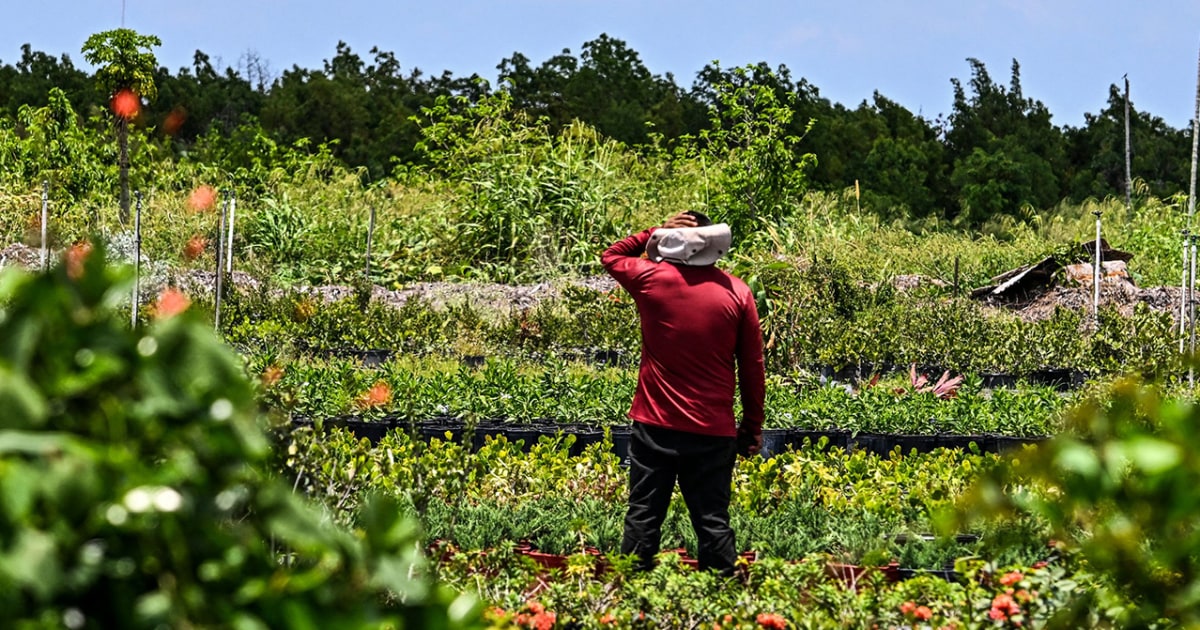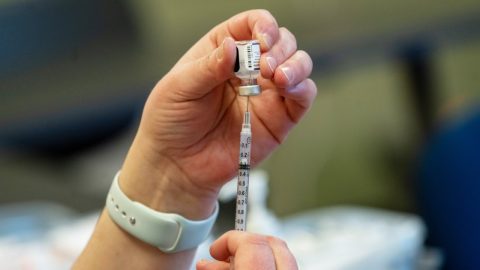
The Summary
- Researchers are experimenting with biosensors that can monitor a worker’s vital signs and warn them if they exhibit signs of heat stroke.
- The four-year study includes over 150 farmworkers in Florida who have been wearing the sensors in the fields.
- Farmworkers are 35 times more likely to die from heat stress than other workers.
Outdoor workers face the highest risk from extreme heat, which can turn deadly in a matter of minutes. So researchers have begun experimenting with wearable sensors that can monitor a worker’s vital signs and warn them if they start exhibiting early signs of heat stroke.
In Pierson, Florida, where temperatures can soar into the 90s before noon, workers on a fern farm have been equipped with experimental biopatches as part of a study sponsored by the National Institutes of Health. The patches measure the workers’ vital signs and skin hydration, and include a gyroscope to monitor continuous movement.
Scientists from Emory University and Georgia Tech are collecting the data, which is then fed into an artificial intelligence algorithm. The eventual goal is for the AI to predict when a worker could be struck by heat illness and send alerts to their phone before that happens. For now, though, the researchers are still analyzing the data, which they plan to publish in studies next year.
“There’s this notion that working out in the field, it’s hot. It’s just the way it is,” said Roxana Chicas, a nurse-researcher at Emory who has been overseeing the biopatch data collection. “I think that with research, creativity, we can find ways to protect the workers while they’re working in the field.”
An average of 34 workers died of heat exposure annually from 1992 to 2022, according to the Environmental Protection Agency. Farmworkers are 35 times more likely to die from it than other workers. But heat protections for laborers have thus far been left up to states. In California, for example, employers must provide training, water and shade if temperatures exceed 80 degrees Fahrenheit, but many states lack such rules.
For their research, Chicas and her team partnered with the Farmworker Association of Florida to recruit participants. They aimed to outfit 100 workers with the biopatches for the four-year study, but said they were surprised by how many people wanted to take part, so wound up with 166.
The participating workers come in before dawn to get their patches and have their vitals measured. Then it’s off to the fields before the hottest and deadliest hours of the day.
“I hope the research will help improve working conditions,” Juan Perez, one of the study participants, said in Spanish. He added that he has been working in fern fields for 20 years and would like more breaks and better pay.
Other farmworkers, too, said they hope the research shows how strenuous their job can be.
Antonia Hernandez, a study participant who lives in Pierson, said she often worries about the heat risk that she and her daughter face; both work in the fern fields.
“If you don’t have a family, you only worry about your house, your rent,” Hernandez said in Spanish. “But if you have children, well, the truth is that there is a lot of pressure on you, you have to work.”
Chicas said she can see the heat’s wear and tear on some workers’ faces.
“They look much older, some of them look much older than they really are, because it really takes a toll on their body and their health,” she said.
Chicas has been researching ways to protect farmworkers from heat for close to a decade. In projects dating to 2015, she outfitted workers with bulky sensors to measure skin temperature, skin hydration, blood oxygen levels and vital signs. The current study is the first time she has experimented with a lightweight biopatch; it resembles a large band-aid and is placed in the middle of the chest.
As a whole, wearable sensors have gotten far less cumbersome, which has enabled some to be more widely used. Although the biosensors Chicas’ team is experimenting with aren’t yet publicly available, a system sold by the brand SlateSafety (and sponsored by the Occupational Safety and Health Administration) is available to employers. It involves arm bands that send readings of a worker’s core body temperature to a monitoring system. If their temperature gets too high, an employer can notify the worker to take a break.
A similar technology, called the Heat Illness Prevention System, is used in the military. Developed by the U.S. Army Research Institute of Environmental Medicine, it involves a chest strap that each soldier or Marine in a company can wear to estimate their core body temperature, skin temperature and gait stability. Leaders can then see the location and heat risk of the service members.
“The system is programmed to sense when someone is approaching higher than appropriate heat exposure levels,” Emma Atkinson, a biomedical researcher at the institute, said in a news release in February, adding: “Our system has enabled us to alert to a heat illness before it happens and be able to take action before somebody falls over.”
Unlike those systems, the one Chicas and her team are developing would send notifications directly to a worker, rather than within a larger system controlled by an employer. They are still finishing collecting data from the farmworkers, then the next step will be for the algorithm to start identifying patterns that indicate a risk of heat illness.
“For workers who work outdoors, they have to spend time outdoors, otherwise our food doesn’t get picked. Our fern doesn’t get cut. Our homes don’t get built,” Chicas said. “And they need to have something to better protect them as the threat of climate change increases.”









Recent Comments